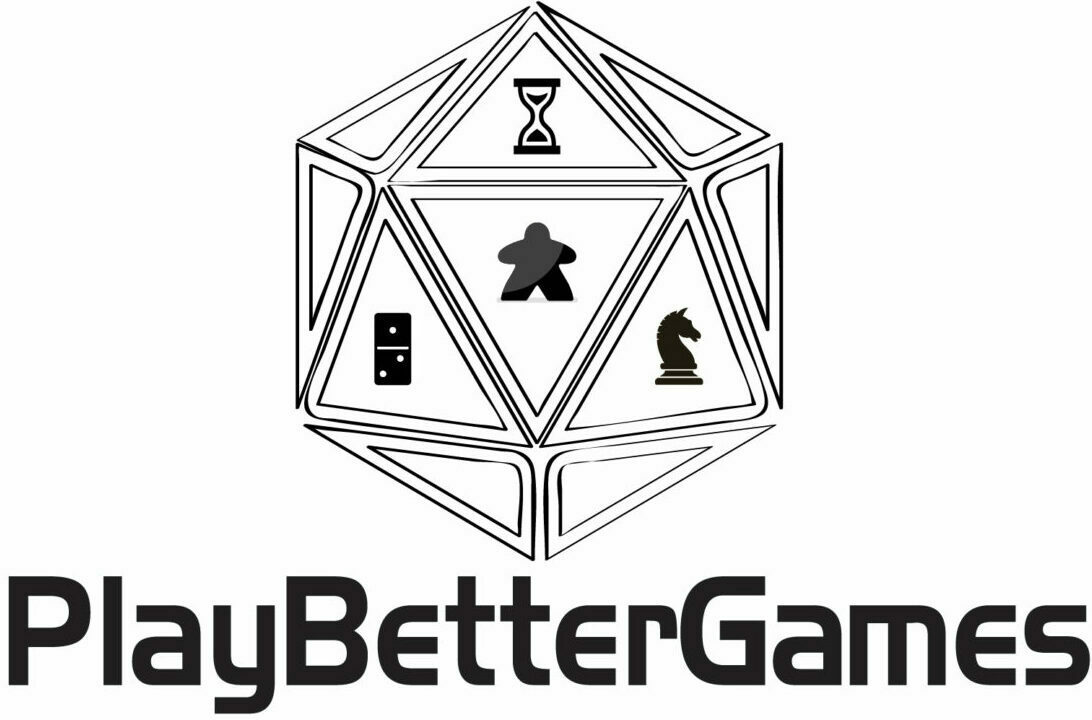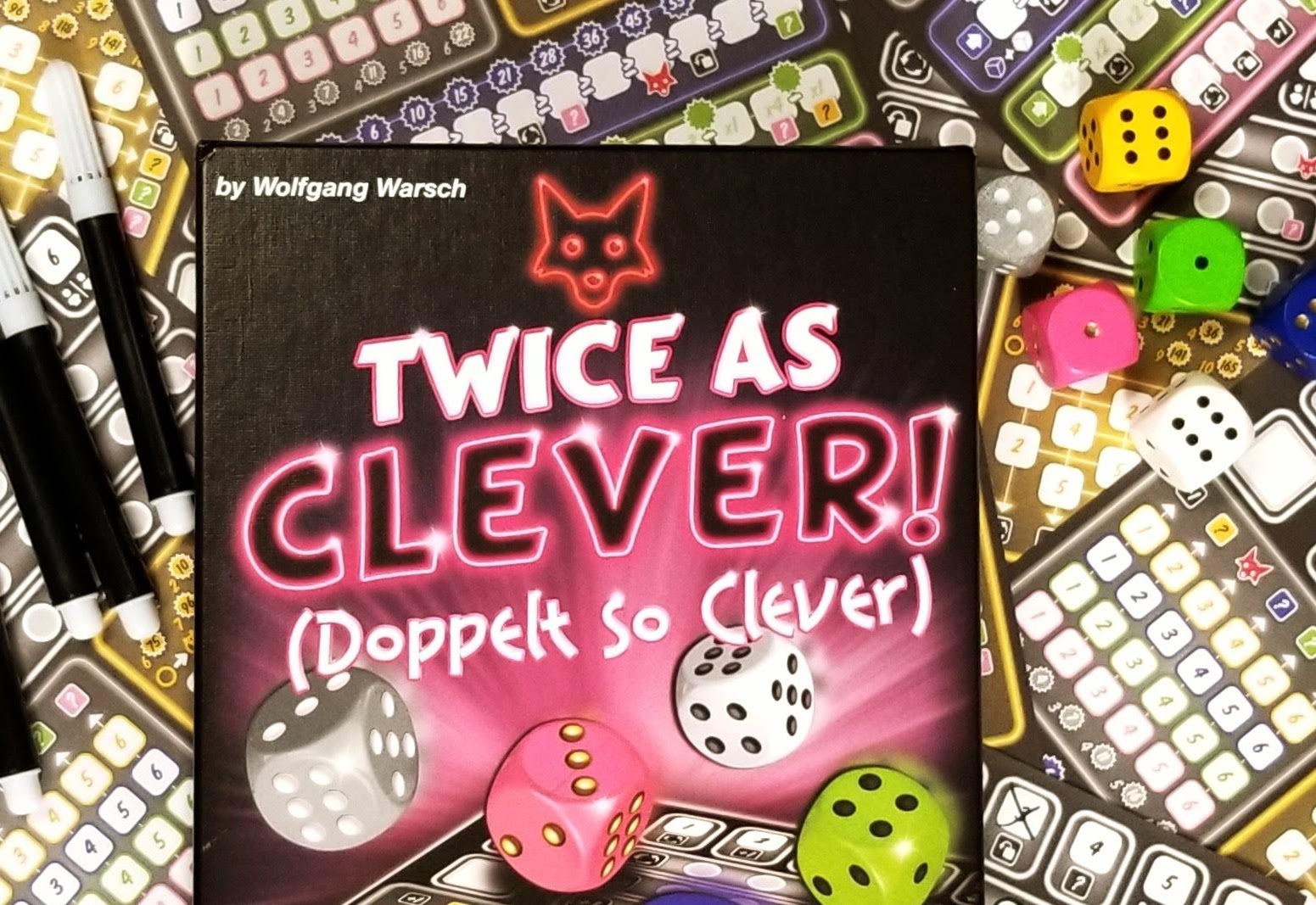Many in the gaming community love roll and write games for their simplicity. The genre is meant to be simple, light-weight and have mass appeal. Twice as Clever (or any of the games in the “Clever” series) shows us that a roll and write doesn’t have to be simple.
Twice as Clever adds complex scoring mechanics including the ability to chain together scoring opportunities adding complexity that will require deliberation from even the most experienced players. Some people won’t like it, but I love it.
In this post, I’ll walk you through the twists and turns of this fantastic little game so you can decide if it’s right for your table.
- Twice As Clever Overview
- How to Play Twice As Clever
- How to Score Points in Twice As Clever
- Round and Bonus Tracker
- The Pink Section
- The Blue Section
- The Green Section
- The Yellow Section
- The Silver Section
- Additional Bonuses
- Things We Like About Twice As Clever
- Can You Play Twice As Clever Online
- Is Twice As Clever Worth The Money
- Final Thoughts
Twice As Clever Overview
Twice as Clever is the second game in a series of “clever” games from designer Wolfgang Warsch; released by Stronghold Games. The game is for one to four players and takes about 30 minutes to play. The “clever” games get increasingly complex with this middle game being a good balance.
As with any Roll and Write, players are given their own score sheet. The score sheet is broken down into five different areas where players can score based on the dice they roll. The game is played over 4-6 rounds depending on the number of players you have.
How to Play Twice As Clever
In this game, all of the players get to choose a dice on every turn, but your choices will be different based on whether you are the active player (the person whose turn it is) or a passive player (everyone else).
The Active Player
On their turn, the active player rolls all six dice and chooses one to score. The die they choose to score is moved into one of the dice slots on their score sheet. Any dice LOWER than the number of the one they kept is moved over to the “silver platter” and becomes an option for the passive players to use.
If there are any dice left that were not moved to the platter, the active player gets to reroll these and choose another dice, again moving the lower dice to the platter. This can happen one more time if there are still dice remaining.
If the active player chooses carefully they should be able to score three dice on their turn. If they instead choose to take a higher die early, they may not get three dice.
The Passive Players
Once the active player has chosen all of their dice, the passive players get to choose one die from the platter to score. They do not remove this die from the platter, all of the passive players could choose the same die if they want.
If a passive player is not able to use any of the dice from the platter they can are allowed choose one of the dice from the active player’s dice slots. This is only if they are UNABLE to score any of the platter dice, is there is something they COULD take, they do not have the option of using any of the active player’s dice.
This is the main mechanic of the game, it’s pretty simple. The complexity comes with all of the various methods of scoring dice. Let’s take a look at the scoresheet
How to Score Points in Twice As Clever
The scoresheet for this game is intimidating. I’ll be honest, it’s going to take you a play-through or two to catch onto it, but I think it’s worth the effort! Here is what the scoresheet looks like:
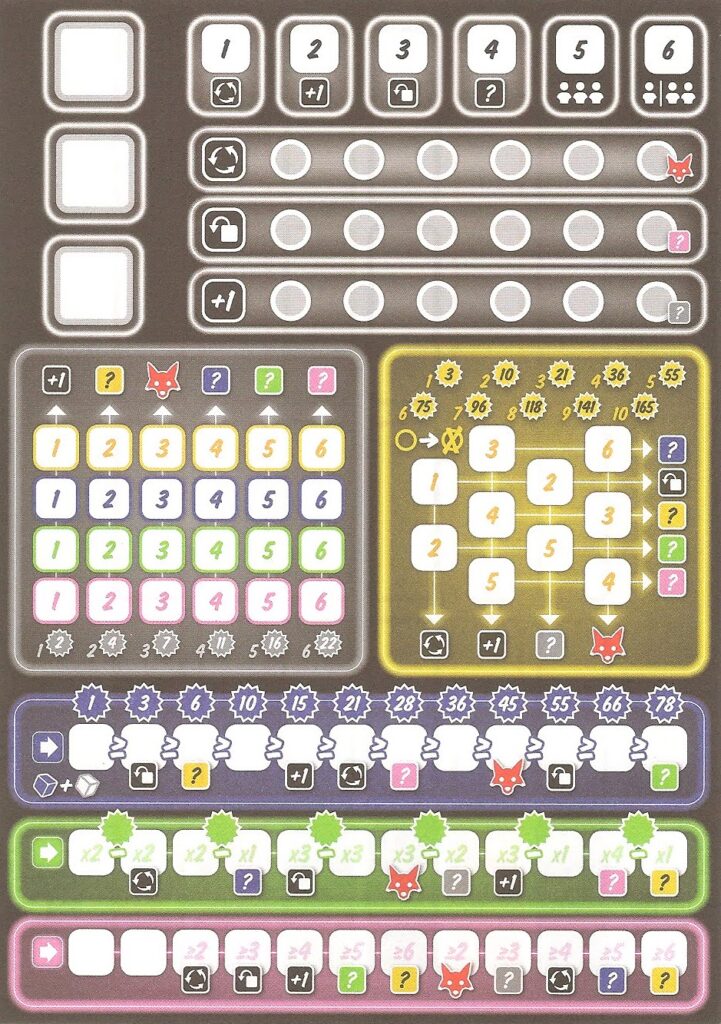
Ok – let’s break it down
Round and Bonus Tracker
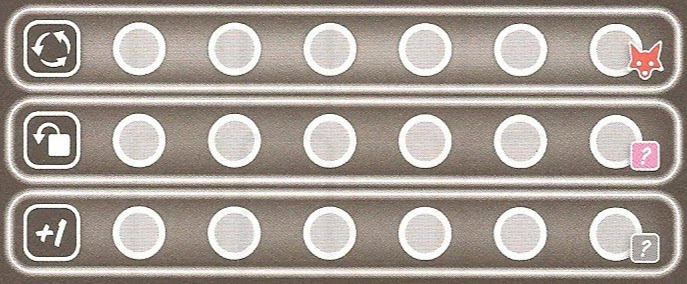
At the top of the scoresheet you’ll see a bonus tracker. There are many different ways to get one of these bonuses thoughout the game. You’ll get a bonus:
- At the beginning of each of the first four rounds
- Whenever you fill in a space on your sheet that has one of the bonus icons under it.
To signify that you’ve acquired the bonus, fill in the outline of the circle. When you take the bonus, X it out. Simple.
The rest of the sections I’ll explain in increasing levels of difficulty.
The Pink Section

The pink section is the easiest section to score. You can place any number in the pink section as long as it meets the requirement listed in the box. For example, you can put any number in the first two boxes, but once you get to third box there starts to be restrictions. The number placed in the third box must be greater than or equal to 2. The next box, greater than or equal to 3 and so on.
You are not allowed to skip any spaces.
Pink Score: At the end of the game, sum all of the numbers in the pink row to get your score.
The Blue Section

Blue is another section that is fairly straight-forward to score. When you take the blue die, you add it’s value to the current value of the white die. You do this no matter where the white die currently resides (in the dice pool, the platter, or on the active player’s sheet). If you take the white wild die as a blue die, you still add it to the blue die (wherever it is).
The rule for placing a number in the blue section is each number has to be less than or equal to the number to the left of it. You move from left to right without skipping any spaces.
Blue Score: At the end of the game you score the number in the starburst above your right-most number in the blue row.
The Green Section

When placing numbers in the green section, move left to right whithout skipping any spaces. Multiply the number on the die by the number pictured in the box and write that number in the box.
Green Score: The green numbers are used in pairs. You’ll notice that each set pair of numbers has a subtraction sign between them. Subtract the second number from the first number and write that number in the starburst above them. At the end of the game add up all of your green starbursts.
The Yellow Section
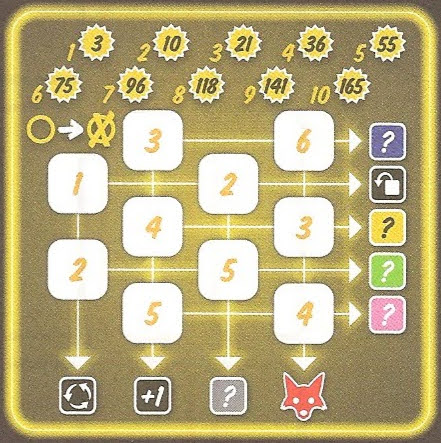
The yellow section is a bit more complicated. The number 1-6 are listed here, some of them more than once. The first time you roll a number in yellow, circle it. The next time you roll it, cross it out (you’ll see a graphic in the upper right to help you remember this.
There are bonuses listed for each of the rows and columns. To get the bonus you only have to have all of the numbers in the row or column circled. You only score points for the numbers you manage to cross out.
Yellow Score: At the end of the game, count the numbers you crossed out and consult the starbursts at the top of the section to get your score.
The Silver Section
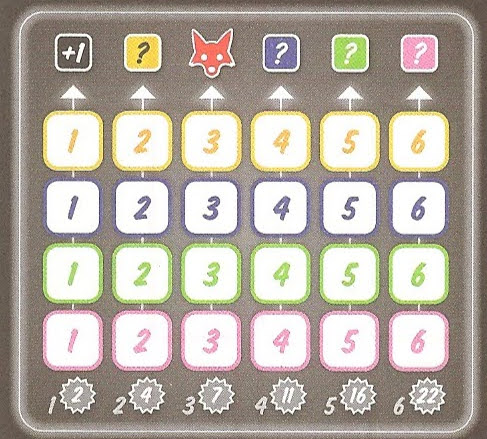
Silver is the most complicated section to wrap your head around initially. Once you get it though, it’s not too hard. It makes use of the silver platter. The numbers 1-6 are listed here for all of the colors except silver.
When you take the silver die you can cross off it’s number for any of the colors. Than any die that is moved to the platter as a result of you taking the silver dice, you also get to mark off those numbers for the given colors.
For example, I roll:
- 5 on Blue
- 4 on White
- 3 on Silver and Green
- 2 on Pink
- 1 on Yellow
If I take the Silver 3 I get to mark off any of the three’s that I have not marked yet. This causes Pink and Yellow to be moved to the platter, so I also get to mark off the pink 2 and the yellow 1.
There are bonuses for completing each of the columns
Silver Score: Each of the rows in silver score individually. Count up the number of X’s in each row and give yourself the corresponding number of points listed at the bottom of the silver section.
Additional Bonuses
In addition to the bonuses we covered in the bonus tracker section you’ll see two additional bonuses
Question Mark – When you see a question mark in a colored box, that means you can place any legal number in that section. You do this immediately and it can be any legal number you choose.
Fox – The foxes are each worth whatever your lowest scoreing color is worth at the end of the game. For example, if you score 10 points in yellow and that’s you’re lowest scoring color EACH of your foxes are worth 10 points.
Things We Like About Twice As Clever
There is a lot to like about this game. We like that every player has a choice to make on every turn. This helps keep people engaged. The fact that the scoring is complex and varied means that you’ll probably have multiply things you like to do each turn, this also keeps things interesting, your choices matter.
We also like that it’s quick to play, so if you really mess things up you can try again relatively quickly. This helps this complex game feel a little bit lighter because you can always try again.
Can You Play Twice As Clever Online
Twice as Clever is available as paid app for both Android and iOS. As of the time of this writing the game costs between $2.99 – $3.49 and the reviews of the apps are mixed. While I highly recommend the physical game, I can not reccommend either app at this time. Hopefully they improve.
Is Twice As Clever Worth The Money
I really like this game and think it’s good value for the money. As with all roll and write games the replayability is limited since you consume the scoresheets, but you can find this game on Amazon for around $20. I haven’t counted them, but you probably get at least 100 scoresheets
You could also make the game infinitely replayable by laminating some of the scoresheets and using a dry erase marker, which is what I may end up doing.
Final Thoughts
If you like roll and writes but find them too simplistic, or you just want to added strategic choices, give Twice as clever a try. It’s a great game for the whole family (recommended for players age 10+). It’s a quick to play and will keep everyone engaged with tough choices to make on every single turn. I was pleasantly surprised by this game, and I hope you are too.
